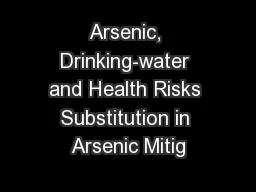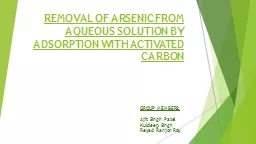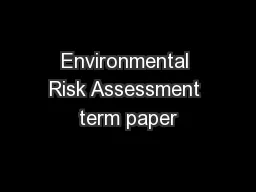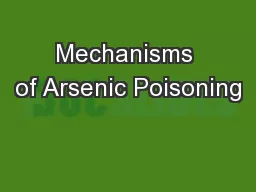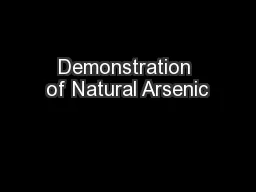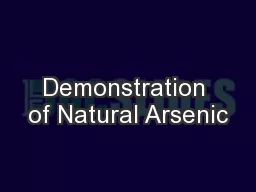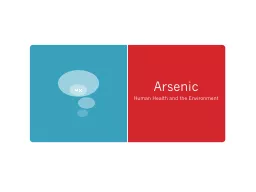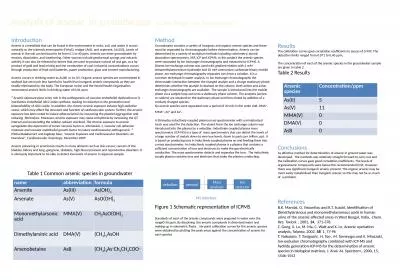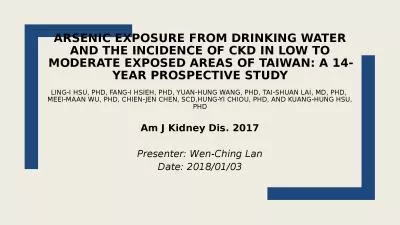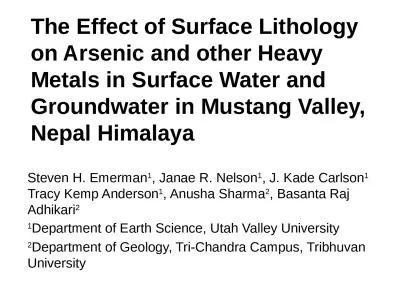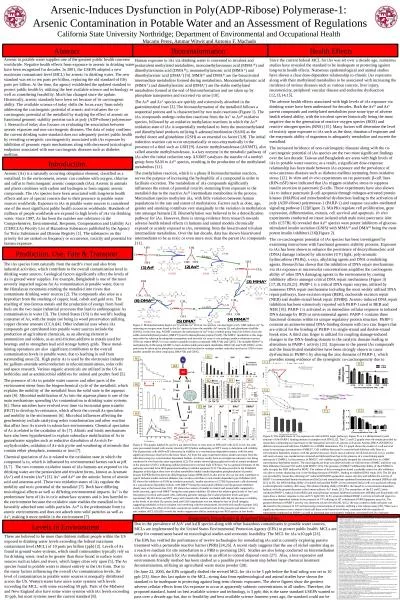PDF-Arsenic, Drinking-water and Health Risks Substitution in Arsenic Mitig
Author : tawny-fly | Published Date : 2016-05-04
WHOSDEWSH0306Distr RestrictedEnglish onlyArsenic Drinkingwater and Health Risk Substitution in Arsenic Mitigationa Discussion PaperAuthorGuy Howard Programme Manager
Presentation Embed Code
Download Presentation
Download Presentation The PPT/PDF document "Arsenic, Drinking-water and Health Risks..." is the property of its rightful owner. Permission is granted to download and print the materials on this website for personal, non-commercial use only, and to display it on your personal computer provided you do not modify the materials and that you retain all copyright notices contained in the materials. By downloading content from our website, you accept the terms of this agreement.
Arsenic, Drinking-water and Health Risks Substitution in Arsenic Mitig: Transcript
Download Rules Of Document
"Arsenic, Drinking-water and Health Risks Substitution in Arsenic Mitig"The content belongs to its owner. You may download and print it for personal use, without modification, and keep all copyright notices. By downloading, you agree to these terms.
Related Documents

